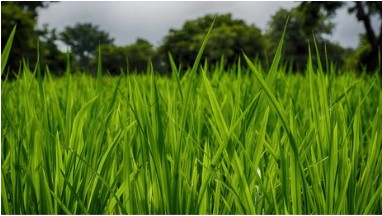
Deficiencies in nutrient content, digestibility, autonomous feeding, and antinutritional factors affect the main quality characteristics of forage. Because maturity has a major impact on forage quality, appropriate harvesting systems and equipment are critical for the consistent production of quality forage. Relatively small changes in forage crop quality can lead to large changes in animal production performance. There are two mechanisms for genetic increases in forage quality, major or minor genes. Relatively few major genes affect forage quality, including brown midvein genes in maize (Zea mays), sorghum (Sorghum bicolor), and pearl millet (Pennisetum glaucum) and dwarf straw genes in pearl millet, etc. Thus, most efforts to improve forage quality utilize some form of phenotypic cyclic selection that acts on an unknown number of quantitative trait loci (QTL). Most QTL have relatively small genetic effects and potentially significant environmental effects.
Our molecular biologists can identify a large number of major genes regulating forage quality traits, as well as QTL genera for forage quality traits in maize ( Zea mays L.), perennial ryegrass ( Lolium perenne L.), and wolf tail. As an ideal partner for forage molecular breeding, Lifeasible combines traditional and molecular breeding techniques to achieve genetic improvement of forage quality, including genetic changes in mineral elements, alkaloids, secondary metabolites, cell walls, protein, or energy availability.
❖ Traditional Strategy for Genetic Improvement of Forage Quality
Lifeasible develops forage quality marker-assisted selection for genetic improvement of forage crops. We successfully developed marker-assisted selection (MAS) protocols and selection criteria for quantitative traits in alfalfa.
(1) Determine the quantitative trait loci (QTL) by correlating phenotypic data with markers on the linkage map.
(2) Determine which putative QTL explains the greatest amount of phenotypic variance and has the expected effect (positive or negative) on that phenotypic trait.
(3) Select plants based on the molecular markers associated with the putative QTL.
❖ Transgenic Strategy for Genetic Improvement of Forage Quality
To attract customers, Lifeasible offers transgenic technology for the genetic improvement of forage quality. We work closely with field-oriented plant breeders to reduce the complexity of transgenic technology in forage breeding programs and to create the potential for genetic variability that does not exist in nature.
Lignin concentration and composition control the digestibility of forages. We can improve the digestibility of forage crops by transgenic techniques to down-regulate enzymes in the phenylpropanoid or monolignol pathways.
We can improve the quality of forage crops by modifying the polysaccharide structure or content of forage cell walls and cell soluble material through genes that control fructan biosynthesis.
We can transform chimeric sunflower seed albumin (SSA) genes into alfalfa and subterranean clover (Trifolium subterraneum) to create and characterize new protein phenotypes in forage plants.
Lifeasible is committed to using genetic engineering to improve the digestibility or intake potential of forage crops and to alter the quantity or quality of protein. Developing truly unique and valuable forage genotypes through genetic engineering helps develop a legitimate pathway and viable market for transgenic forage crops. If you have any special requirements for our solutions, please feel free to contact us.
Reference
Lifeasible has established a one-stop service platform for plants. In addition to obtaining customized solutions for plant genetic engineering, customers can also conduct follow-up analysis and research on plants through our analysis platform. The analytical services we provide include but are not limited to the following:
Get Latest Lifeasible News and Updates Directly to Your Inbox
Adaptive Evolutionary Mechanism of Plants
February 28, 2025
Unraveling Cotton Development: Insights from Multi-Omics Studies
February 27, 2025